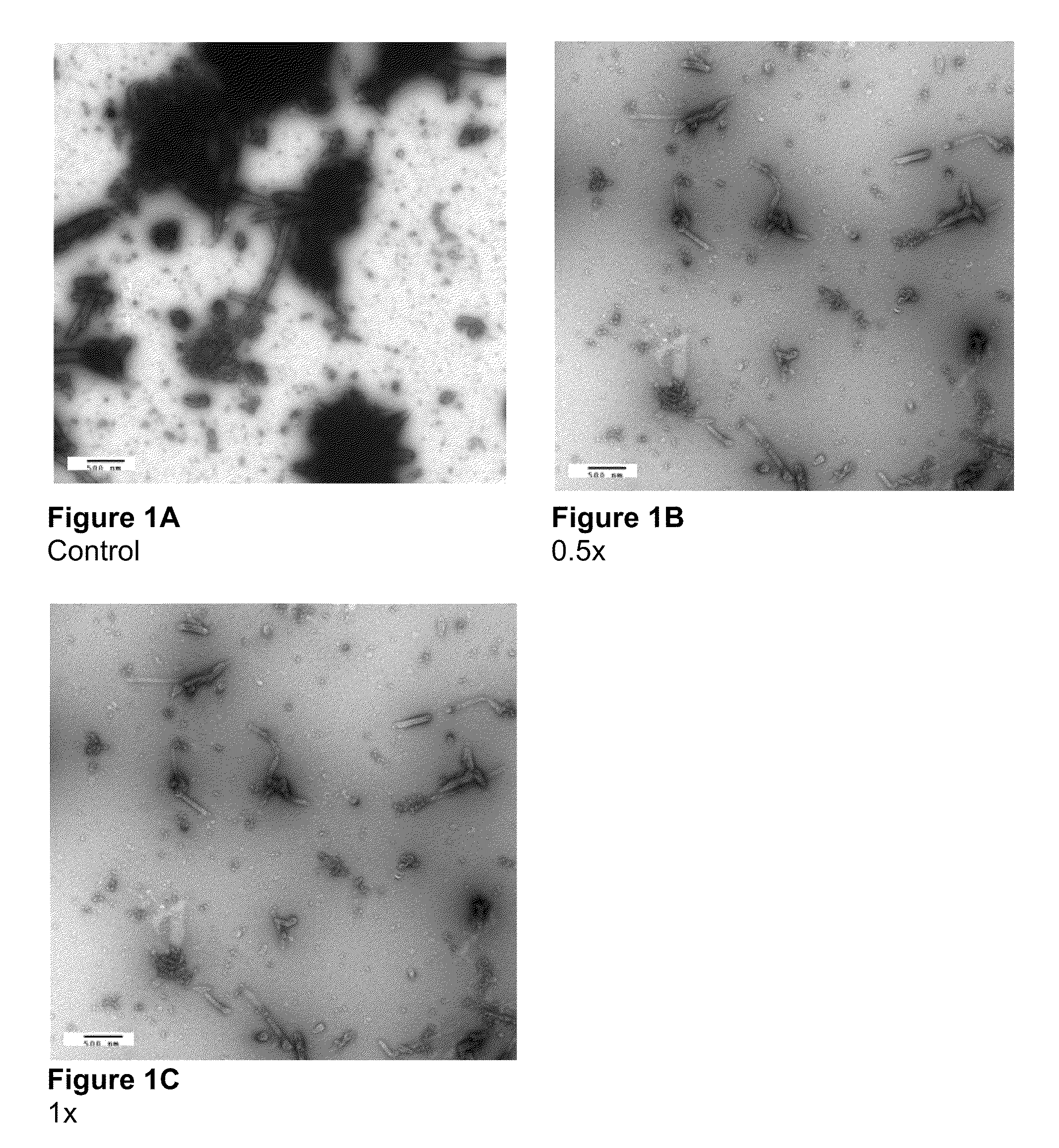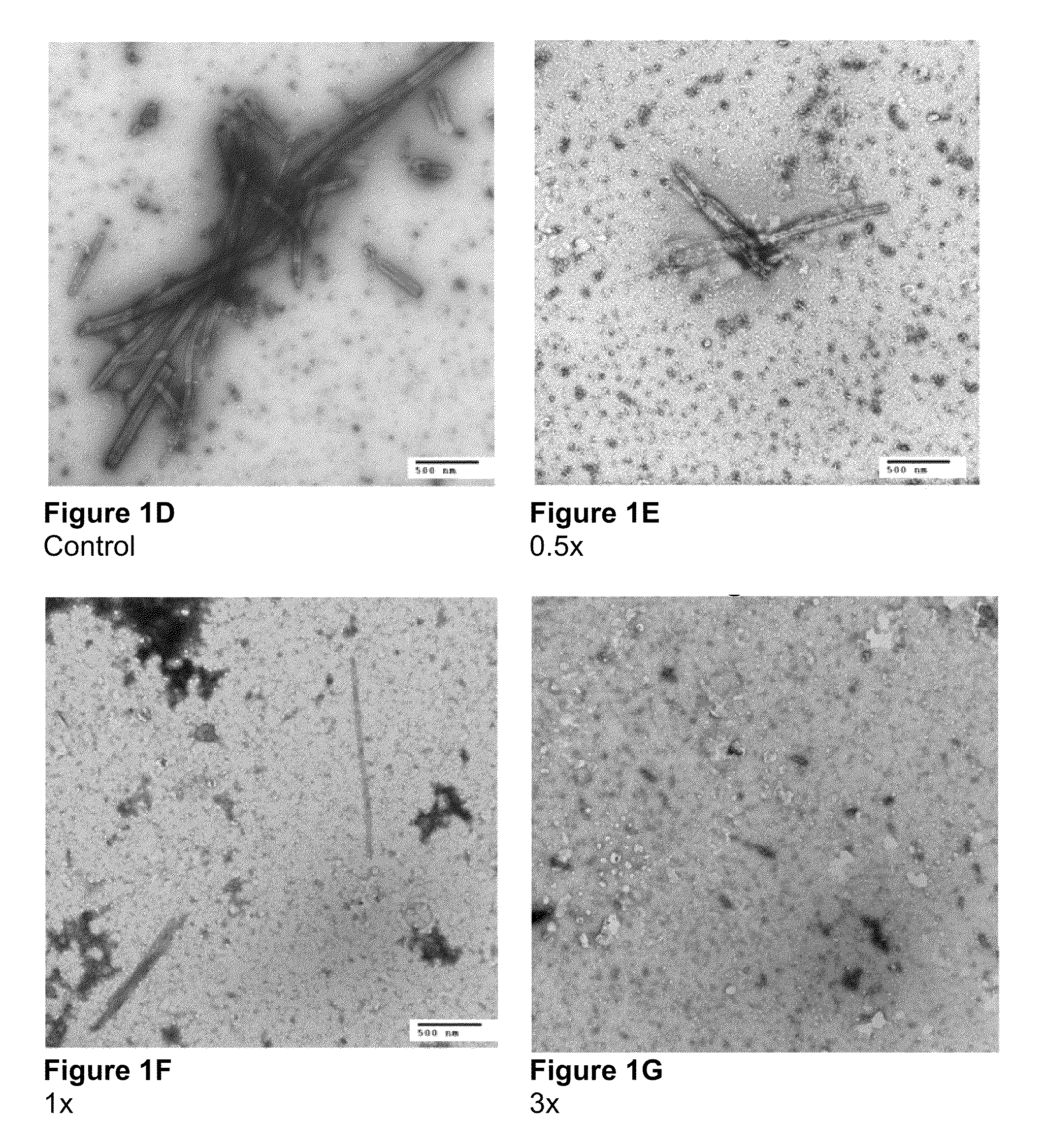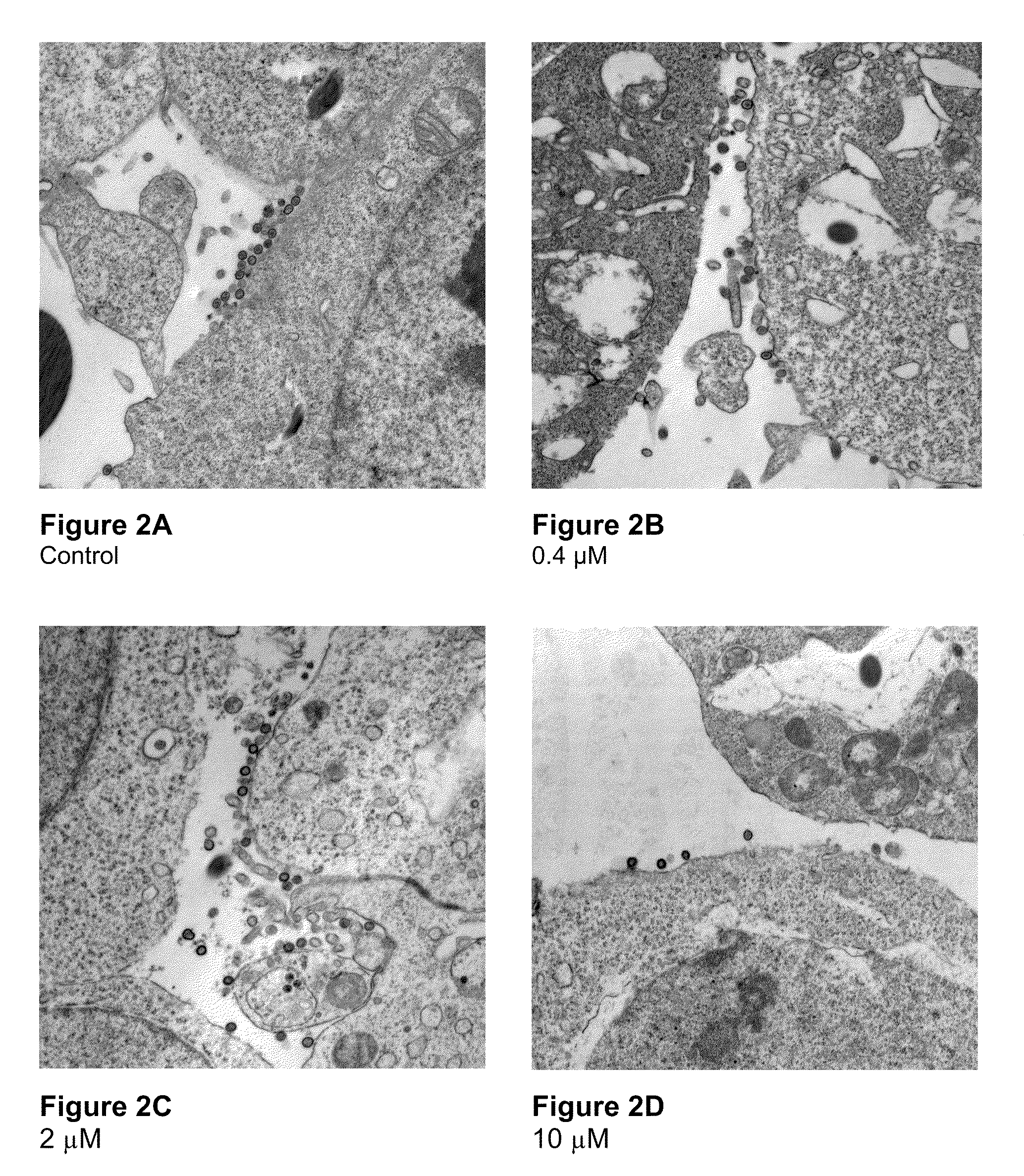Small Molecule Inhibitors of Retroviral Assembly and Maturation
a small molecule and assembly technology, applied in the direction of biocide, heterocyclic compound active ingredients, drug compositions, etc., can solve the problems of severe limitation of treatment options, morbidity and mortality,
- Summary
- Abstract
- Description
- Claims
- Application Information
AI Technical Summary
Benefits of technology
Problems solved by technology
Method used
Image
Examples
example 1
Electron Microscopy to Study Inhibition of In Vitro Assembly and Maturation
[0083]In vitro assembly was studied in both a cell-free and a cell based system. The cell-free systems were set up as described (Huseby et al., Assembly of human immunodeficiency virus precursor gag proteins; J. Biol Chem, 280:17664-17670 (2005); Ganser-Pornillos et al., Assembly properties of the human immunodeficiency virus type-1 CA protein; J. Virol, 78:2545-2552 (2004); and Gross et al., In vitro assembly properties of purified bacterially expressed capsid proteins of human immunodeficiency virus; Eur. J. Biochem., 249:592-600 (1997)) with minor modifications. 50 mM Na2HPO4, pH 8.0 was used as the dialysis buffer. The buffer used for assembly studies also contained 1.2 M NaCl and 100 or 500-Da-MWCO dialysis tubes (SPECTRA® / Por) were used for the dialysis of peptides. Briefly, stock proteins were adjusted to the appropriate concentration (50 μM for CA proteins) in Na2HPO4 buffer at pH 8.0. After incubatio...
example 2
Inhibition of HIV-1 Infectivity
[0087]The inhibitory activity of NYAD-S6, NYAD-S8 and their analogs on infection by laboratory-adapted HIV-1 strains was determined as previously described (Jiang et al., Enhancement of human immunodeficiency virus type-1 infection by antisera to peptides from the envelope glycoproteins gp120 / gp41; J. Exp. Med., 174:1557-1563 (1991)) with minor modifications. AZT was used as a positive control in the infectivity assays. In brief, 1×104 MT-2 cells (lymphocytes) were infected with HIV-1 at 100 TCID50 (50% tissue culture infective dose, 0.01 MOI [multiplicity of infection]) in 200 μL RPMI 1640 medium containing 10% FBS in the presence or absence of small molecules at graded concentrations overnight. The culture supernatants were then removed and fresh media containing freshly prepared test compounds were added. On the fourth day post-infection, 100 μL of culture supernatants were collected from each well, mixed with equal volume of 5% TRITON X-100® and te...
example 3
Cytotoxicity of Inhibitors
[0091]Cytotoxicity of small molecules in cultures with MT-2 cells and PBMC was measured by the tetrazolium hydroxide XTT (sodium 3′-(1-(phenylamino)-carbonyl)-3,4-tetrazolium-bis(4-methoxy-6-nitro) benzenesulfonic acid hydrate) cytotoxicity assay, as previously described (Jiang et al., 2004). Briefly, for MT-2 cells, 100 μL of small molecule at graded concentrations was added to an equal volume of cells (5×104 cells / ml) in 96-well plates followed by incubation at 37° C. for 4 days, which ran parallel to the neutralization assay in MT-2 (except medium was added instead of virus). In the case of PBMC, 2.5×105 cells / mL were used and the cytotoxicity was measured after 7 days. After addition of XTT (PolySciences, Inc.), the soluble intracellular formazan was quantitated calorimetrically at 450 nm 4 hours later with a reference at 620 nm. The CC50 values were calculated.
[0092]The cytotoxicity measurements of NYAD-S6 and its analogs have been presented in Table 1...
PUM
| Property | Measurement | Unit |
|---|---|---|
| pH | aaaaa | aaaaa |
| volume | aaaaa | aaaaa |
| structure | aaaaa | aaaaa |
Abstract
Description
Claims
Application Information
 Login to View More
Login to View More - Generate Ideas
- Intellectual Property
- Life Sciences
- Materials
- Tech Scout
- Unparalleled Data Quality
- Higher Quality Content
- 60% Fewer Hallucinations
Browse by: Latest US Patents, China's latest patents, Technical Efficacy Thesaurus, Application Domain, Technology Topic, Popular Technical Reports.
© 2025 PatSnap. All rights reserved.Legal|Privacy policy|Modern Slavery Act Transparency Statement|Sitemap|About US| Contact US: help@patsnap.com



